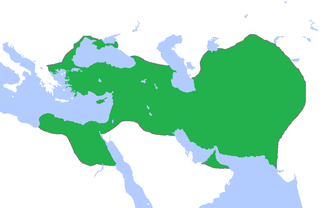Persian Empire
The ancient Persian Empire included areas far beyond modern Persia, now called Iran. At times the Persians controlled much of the Middle East — they were a main antagonist of Ancient Greece a few centuries BCE (and later the Roman Empire), and ruled Egypt at one point — as well as much of the Caucasus and Central Asia and parts of what are now Pakistan and India.
Understand
In Western canon, the Persian Empire was famous for the liberation of Jews from Babylon, as well as the Persian Wars with Ancient Greece.
They had a huge influence on Central Asia, much of which they ruled for centuries. Marco Polo, for example, describes cities like Bukhara and Balkh as Persian. Even today, one dialect of Persian is the main language of Tajikistan and another is widely used in Afghanistan. They also had a tremendous influence on South Asia which was repeatedly invaded by Persian speakers, from Darius taking Gandhara in the 6th century BCE to the Mughal Empire which ruled much of the subcontinent from the 16th century CE into the 19th.
Persia has been conquered three times: by Alexander the Great in the 4th century BCE, by Arabs during the great expansion of Islam in the 8th century CE, and by the Mongol Empire in the 13th. Every time, it has risen again to create another Persian Empire.
Talk
Old Persian was only one of many languages spoken and used officially by the First Persian Empire, the Achaemenid, along with Babylonian, Elamite, Aramaic and even Greek. This multilingual approach to governance continued during the course of the Parthian and early Sasanian Empires. By the late Sasanian however, Middle Persian had emerged as the prestige and dominant language in the Greater Iranian sphere, which over the centuries evolved into Modern Persian and kept its dominance to the modern day.
The main dialects of modern Persian are Farsi in Iran, Tajik in Tajikistan and Dari in Afghanistan. They are different enough to create difficulties, but not to completely prevent understanding.
Destinations
Regions

At its peak, around 500 BCE, the empire was enormous. These areas retained Persian culture for centuries:
- Afghanistan has always shown a strong Persian influence
- Bactria has been a center of trade for several thousand years
- Iran was the center of the empire
- Sogdia was the northernmost part of the empire a few centuries BCE
- Gandhara, a civilization centered in what is now Pakistan, with much fine Buddhist art
Cities
See Iran#Cities for the main modern towns there. This section lists only places not on that list.
- 🌍 Baku (Azerbaijan). For much of its history, was a Persian city, and its old core's architecture reflects this fact.
- 🌍 Balkh. Former capital of Bactria, now a town in northern Afghanistan with interesting buildings
- 🌍 Bokhara (Uzbekistan). Great trading city on the Silk Road
- 🌍 Derbent (Dagestan). "The Barred Gates"in Persian, often identified with the legendary Gates of Alexander, was intermittently controlled by the Persian monarchs, starting from the 6th century BC. Its beautiful fortress is thought to date from the reign of Khosrau I.
- 🌍 Herat. Now Afghanistan's westernmost city, it's heavily influenced by Persia and sometimes part of the empire
- 🌍 Persepolis (Iran). Now only ruins, was the empire's capital in its days of glory
- 🌍 Samarkand (Uzbekistan). Silk Road city and once capital of the empire's northernmost province, Sogdia